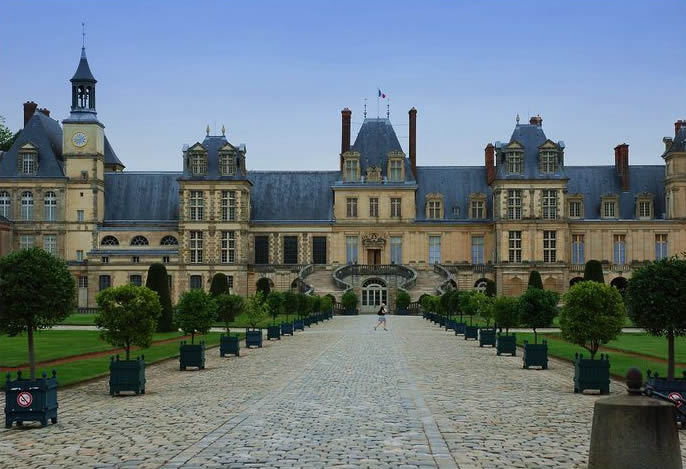
- The scenic spot of Britain
- Architectural decoration
- The buildings of ancient Rome
- Gothic architecture
- Baroque architecture
- Luo Man architecture
- The French Neo classicism architecture
- Renaissance architecture
- Romantic architecture
- Eclecticism architecture
- Classical revival architecture
- Rococo architecture
- Painting and sculpture
- Art performance
- Jewelry, antiques
- Fashion make-up class
- The diet leisure class
- Life Home Furnishing class
- Culture and education
- The folk custom activity
- Event exhibition class
- Add:Teisterbantstraat 44,6825CL Arnhem , Holland
- Tel:+0031-026-7370226
- Fax:+0031-026-7370226
- E-mail:teucaeu@hotmail.com
- Contacts:Mr.Thomas
INTRODUCTION:
文艺复兴建筑是欧洲建筑史上继哥特式建筑之后出现的一种建筑风格。十五世纪产生于意大利,后传播到欧洲其它地区,形成带 了有各自特点的各国文艺复兴建筑。意大利文艺复兴建筑在文艺复兴建筑中占有最重要的位置。 文艺复兴建筑是15-19世纪流行于欧洲的建筑风格,有时也包括巴洛克建筑和古典主义建筑.起源于意大利佛罗伦萨。在理论上以文艺复兴思潮为基础;在造型上排斥象征神权至上的哥特建筑风格,提倡复兴古罗马时期的建筑形式,特别是古典柱式比例,半圆形拱券,以穹隆为中心的建筑形体等。例如,意大利佛罗伦萨美第奇府邸、法国枫丹白露宫、被誉为“欧洲最漂亮的客厅”的威尼斯圣马可广场、维琴察圆厅别墅和等。
The Palace of Fontainebleau, located 55 kilometres from the centre of Paris, is one of the largest French royal châteaux. Thepalace as it is today is the work of many French monarchs, building on an early 16th-century structure of Francis I. The building isarranged around a series of courtyards. The commune of Fontainebleau has grown up around the remainder of the Forest of Fontainebleau, a former royal hunting park.This forest is now home to many endangered species of Europe.
The older château on this site was already used in the latter part of the 12th century by King Louis VII, for whom Thomas Becket consecrated the chapel. Fontainebleau was a favourite residence of Philip Augustus (Philip II) and Louis IX. The creator of the present edifice was Francis I, under whom the architect Gilles le Breton erected most of the buildings of the Cour Ovale, including the Porte Dorée, its southern entrance. The king also invited the architect Sebastiano Serlio to France, and Leonardo da Vinci. The Gallery of Francis I, with its frescoes framed in stucco by Rosso Fiorentino, carried out between 1522 and 1540, was the first great decorated gallery built in France. Broadly speaking, at Fontainebleau the Renaissance was introduced to France. The Salle des Fêtes,in the reign of Henry II, was decorated by the Italian Mannerist painters, Francesco Primaticcio and Niccolò dell'Abbate. BenvenutoCellini's "Nymph of Fontainebleau", commissioned for the château, is at the Louvre.
Another campaign of extensive construction was undertaken by King Henry II and Catherine de' Medici, who commissioned architects Philibert Delorme and Jean Bullant. To the Fontainebleau of François I and Henry II, King Henry IV added the court that carries his name, the Cour des Princes, with the adjoining Galerie de Diane de Poitiers and the Galerie des Cerfs, used as a library. A "second school of Fontainebleau" decorators, less ambitious and original than the first, evolved from these additional projects. Henry IV pierced the wooded park with a 1200m canal (which can be fished today) and ordered the planting of pines, elms and fruit trees. The park stretches of an area more than 80 hectares, enclosed by walls and pierced rectilinear paths. Henry IV's gardener, Claude Mollet, trained at Château d'Anet, laid out patterned parterres. Preserved on the grounds is Henry IV's jeu de paume (real tennis court). It is the largest such court in the world, and one of the few publicly owned.
Philip the Fair (Philip IV), Henry III and Louis XIII were all born in the palace, and Philip died there. Christina of Sweden lived there for years, following her abdication in 1654. In 1685 Fontainebleau saw the signing of the Edict of Fontainebleau, which revoked the Edict of Nantes (1598). Royal guests of the Bourbon kings were housed at Fontainebleau, including Peter the Great of Russia and Christian VII of Denmark.
